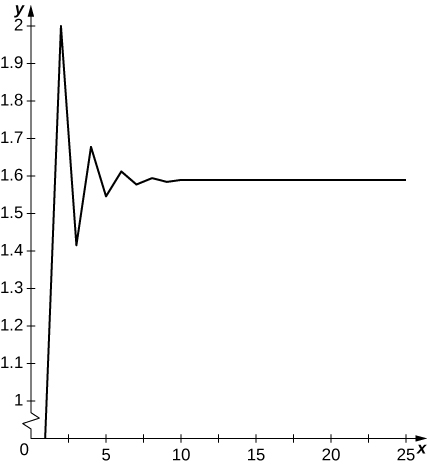| << Chapter < Page | Chapter >> Page > |
Find the first six terms of each of the following sequences, starting with
Find a formula for the term of the arithmetic sequence whose first term is such that for
Find a formula for the term of the arithmetic sequence whose first term is such that for
Find a formula for the term of the geometric sequence whose first term is such that for
Find a formula for the term of the geometric sequence whose first term is such that for
Find an explicit formula for the term of the sequence whose first several terms are ( Hint: First add one to each term.)
Find an explicit formula for the term of the sequence satisfying and for
Find a formula for the general term of each of the following sequences.
( Hint: Find where takes these values)
Find a function that identifies the term of the following recursively defined sequences, as
Plot the first terms of each sequence. State whether the graphical evidence suggests that the sequence converges or diverges.
[T] and for
Terms oscillate above and below
and appear to converge to

[T] and for
[T] and for
Terms oscillate above and below
and appear to converge to a limit.

[T] and for
Suppose that and for all Evaluate each of the following limits, or state that the limit does not exist, or state that there is not enough information to determine whether the limit exists.
Find the limit of each of the following sequences, using L’Hôpital’s rule when appropriate.
For each of the following sequences, whose terms are indicated, state whether the sequence is bounded and whether it is eventually monotone, increasing, or decreasing.

Notification Switch
Would you like to follow the 'Calculus volume 2' conversation and receive update notifications?